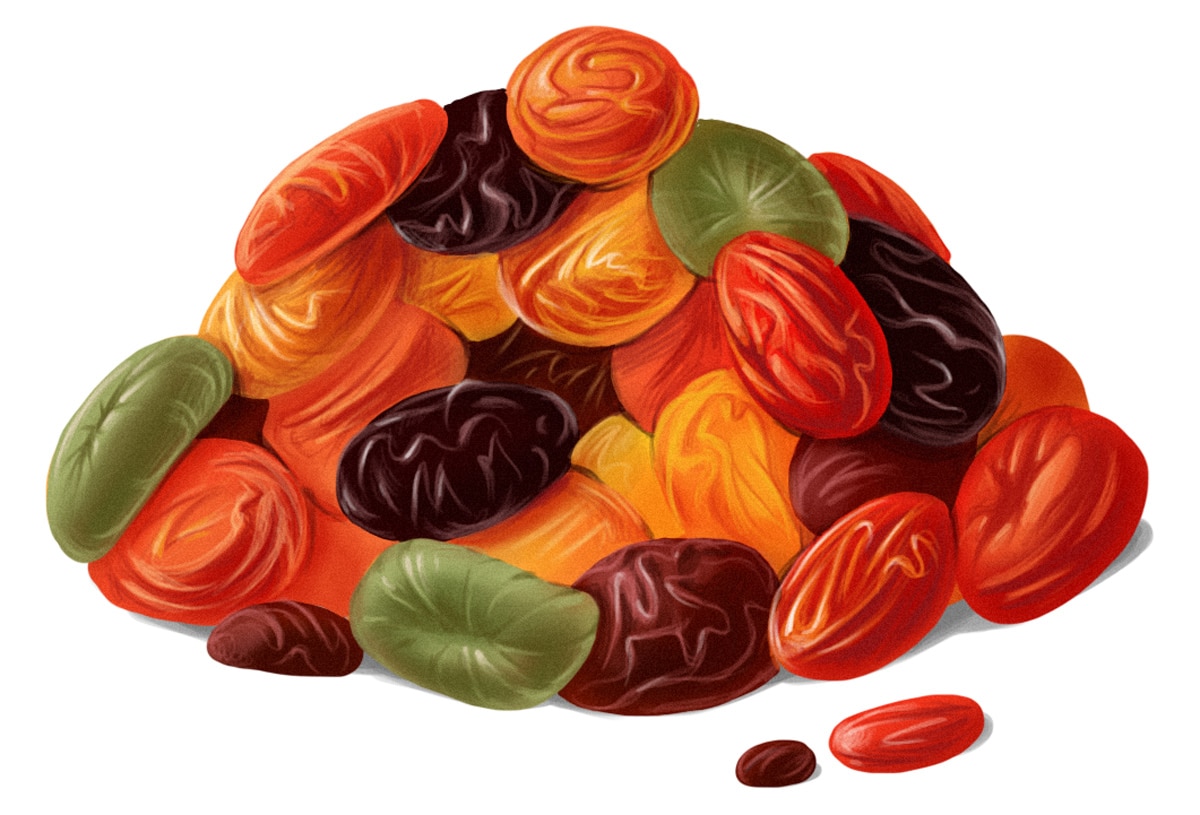
It’s hard enough to eat Paleo as adults - but getting a toddler to do it? Really?
Maybe 0.1% of the population can have perfectly Paleo toddlers - for the rest of us, it’s more like Paleo-inspired nutrition most of the time and not panicking when someone inevitably gives the kid some Goldfish crackers. (Diseases like Celiac obviously excepted.)
Perfection would be feeding your toddler made-from-scratch Paleo food all the time - and there are lots of great toddler-friendly Paleo recipes, like muffin bites and zucchini tots. But this is the real world and we’re all doing what we can with limited time and energy; sometimes it's just not feasible to make home-cooked everything. There's no judgement here for overwhelmed parents just trying to feed their kids.
So here’s some quick advice about pre-prepared foods that are marketed to toddlers in the grocery store. How can you find the Paleo-ish alternatives? What’s the best of the not-great?
The most important part: read the ingredients and nutrition facts
Always, always, always read the ingredients list and the Nutrition Facts panel. Always. If you take one thing away from reading this entire article, it’s this.
So many parents get tricked by misleading advertising on the front of the package - words like “natural” and “organic” in folksy, homemade colors with pictures of farms and vegetables...while meanwhile the food inside is 90% sugar and white flour. And it’s totally understandable - the parents are tired, stressed, probably in a rush, maybe with little kids along - who energy to stand around in the grocery aisle scrutinizing the fine print?
If your grocery trips are like this, try…
- Look at the labels after you get home and keep a “buy again/do not buy again” list in your wallet for later grocery trips. Within a few weeks, you’ll have a workable yes/no sheet tailored to your family’s needs.
- Look at packages already in the house to add them to your yes/no list.
- Look up brands/information before you go (good if you know what you want to buy and/or are shopping from sales flyers)
So what to look for as you read all those labels? Mostly...
Sugar: how much is too much?

Everyone knows that feeding their kids “too much” sugar is bad, but how much sugar is too much sugar, and how do you know?
Lots of healthy foods have some sugar, with fruit being the obvious example. To take a stab at a reasonable upper limit, the World Health Organization recommends no more than 10% of calories from free sugar per day. (You know it’s a legit recommendation because the US sugar industry got furiously up in arms about how “unfair” it was - if the sugar industry hates it, it's probably reasonable.) Free sugar means any kind of concentrated sugar added to food. It includes sugar from fruit juice (but not whole fruit), honey, maple syrup, and of course table sugar.
For a toddler eating 1200 calories per day, that’s less than 120 calories from free sugar, aka less than 30 grams of free sugar (remember that this isn’t counting fruit eaten in its whole form - so a bowl of apples wouldn’t count towards this limit, but a glass of apple juice would). From a Paleo perspective, it’s best to eat less, but that’s why it’s a maximum.
A few recommendations:
- On the Nutrition Facts: “Added sugar” should be low and ideally zero. 30 grams is probably decent for a daily upper limit; aim to stay well under that most days.
- On the Ingredients list: look for “sugar,” “corn syrup,” “cane sugar,” “organic cane sugar” (not any healthier than normal sugar!), “cane juice,” “beet sugar,” “fruit juice concentrate,” etc. These are all sneaky names for sugar. If you see any of these, look to see if there’s an alternative without added sugar.
- Whether you’re OK with honey or maple syrup as sweeteners is up to you - just be aware that they’re also basically sugar.
- Just say no to fruit juice. It’s very high in sugar and it’s not particularly nutritious.
- With whole fruits, as long as the kid is healthy and eating plenty of protein and fat, don’t stress about sugar content at all. Sure, strawberries have some sugar, but from a health perspective, it’s absolutely not worth stressing about.
Other non-Paleo ingredients
On top of the sugar, most foods marketed to toddlers will have other non-Paleo ingredients like corn, soy, wheat, peanuts, lentils, etc. None of these are perfect choices, but again, let the lifelong flawless Paleo eater cast the first stone.
How much non-Paleo food are you OK with your toddler eating? Is it OK as long as it’s gluten-free? OK as long as it’s organic? Pick what your battles are going to be - then read the nutrition facts and the ingredients so you have the information to fight them. Remember that you get partial credit for less-bad options!
A few kinds of toddler foods, evaluated
Three kinds of toddler foods to know:
Toddler milks
Long story short: don’t buy them; if you want some kind of milk for your toddler, whole milk is more nutritious and cheaper.
In this study, researchers compared 20 different brands of toddler milks.
- 85% had added sugar.
- 90% had industrially processed “vegetable” oils
- 80% had a higher sugar content than whole dry milk
- 100% had less protein than whole milk.
The authors recommended that parents just feed their toddlers whole milk. From a Paleo standpoint, dairy is always a bit of a gray area, but if toddlers are going to drink milk at all, there’s no real evidence that fancy “toddler milk” is better than ordinary milk, and in fact it’s likely worse.
Dried or packaged fruit
Long story short: be mindful of how concentrated the fruit sugar is. Pick foods with no added sugar and aim for no more than one concentrated fruit source per day.

There are so many different types of squeeze pouches full of fruit and vegetable purees. Lots of them are full of added sugars, and even the ones that aren’t are concentrated, so there’s more sugar per spoonful of squeeze fruit than you’d get in real apples or blueberries or whatever. Think of them as a middle ground between free sugars (sugar, honey, fruit juice, etc.) and whole fruit.
The same goes for dried fruit (fruit leather, fruit bars, raisins, cranberries, banana chips, etc.). All these foods might not have any added sugar, but the drying process concentrates the sugar that’s naturally in the fruit, so it’s very easy to eat a lot of sugar in just a few bites.
Granted, some toddlers are impressively picky eaters and will actually starve themselves before they touch broccoli or cantaloupe. But if possible, the ideal is to have kids eating their fruit and vegetables in whole-food form as soon as they can safely do it (obviously with cutting, etc. as necessary to prevent choking hazards).
Healthified gluten-free snacks
Long story short: understand that they’re treats and try for the less-bad.
With the explosion of interest in gluten-free diets, there are tons of gluten-free snack crackers, healthified Cheetos, rice puffs, and similar foods for toddlers and kids. These are definitely the less-bad alternatives for Paleo kids, but bear in mind that corn flour, soy, junk oils, and sugar are all gluten-free. Having no gluten doesn’t make it healthy!
At best, these treats might be corn-free and made with tapioca flour or something (some of them are even made with all Paleo ingredients), but they’re still treats. It’s obviously fine for kids to have treats - just be aware that that’s what they are.
Well, that was a killjoy.
Unfortunately, yeah. Without specifically shaming or praising any particular brands, it’s hard to find good options in the “kid food” section. Health-wise, home-cooked food almost always wins out - but again, people aren't perfect and sometimes we need convenience. Luckily, with the renewed interest in healthy eating, there are getting to be a lot more options with less junk in them - but for now, the ideal is still to eat home-cooked food for most meals.
What's your favorite store-bought toddler meal or snack? Let us know on Facebook or Twitter!





Leave a Reply